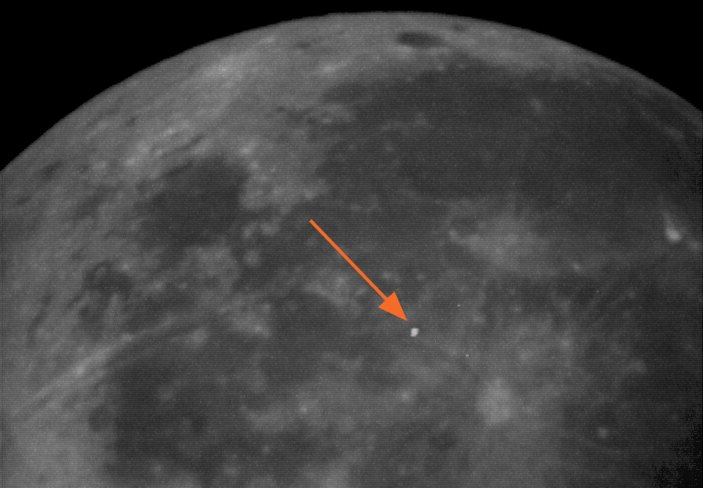Lunar impact flashes: observations in the framework of the ESA CARMEN project and development of new monitoring systems
- Instituto de Astrofísica de Andalucía, IAA-CSIC, Granada, Spain (madiedo@cica.es)
Introduction
The flux of interplanetary matter hitting our planet can be analyzed by studying the flashes generated when meteoroids impact the lunar ground at hyperspeed regime. Our team at the Institute of Astrophysics of Andalusia (IAA-CSIC) has been involved in the observation and analysis of these impact events since 1997 [1]. Since then, impact flashes have been unambiguously detected during the peak activity of several major meteor showers by using this technique, and flashes of sporadic origin have been also recorded [2].
For the detection of lunar impact flashes we have employed telescopes endowed with high-sensitivity CCD video cameras. Most of our telescopes are Schmidt-Cassegrain instruments with an aperture ranging between 28 to 50 cm, although some observational campaigns have been also performed with much larger instruments, such as, for instance, the 3.5 m telescope located at the Calar Alto Observatory [3].

Figure 1. Lunar impact flash recorded in the framework of the ESA CARMEN project on 5 March 2022 at 19h23m16s UT, with a peak apparent magnitude of 5.
During the last decade we have performed important improvements in the systems employed to detect and analyze these flashes. Most of these advances involved the use of faster cameras with higher resolution working at different wavelengths. Here we focus on the systems employed by our team in the framework of ESA's CARMEN project, and also on two new systems deployed at the Calar Alto Observatory in Spain. One of these has been designed to perform observations in three wavelengths.
Contribution to the CARMEN project
Since 2021, and as a continuation of ESA's P3-NEO-I project, our team at IAA is member of a consortium of several astronomical observatories leaded by the companies Deimos Space and 6Roads. This consortium is conducting ESA's project “Consolidating Activities Regarding Moon, Earth and NEOs (CARMEN)”. and are one of the groups responsible for the work package (WP) dedicated to the detection and analysis of lunar impact flashes. One of the aims of this WP is the quantification of the flux of interplanetary matter that impacts our planet. For this purpose we have employed several telescopes located at two observatories in the south of Spain: La Sagra, and Sevilla. We are employing CMOS cameras with a maximum frame rate of 168 fps at full resolution (1920x1200 pixels). Figure 1 shows a sample lunar impact flash recorded with one of these devices in the framework of CARMEN.
New systems at Calar Alto
Our team has deployed a new telescope at the Calar Alto Observatory (Spain) and one of its goals is to observe lunar impact flashes. This instrument, which has an aperture of 60 cm, was initially intended to employ a system consisting of high-speed CMOS cameras (with a frame rate of 300 fps) to observe, simultaneously, at three different wavelengths (I, V and R). The telescope, which has been founded by the Spanish Ministry for Science and Innovation, is located within a dedicated 4-m automated dome. Figure 2 shows an image of this new instrument, which can be controlled remotely. However, it was finally decided to attach this 3-channel system to the 1,25m telescope located at that observatory. The 60-cm telescope would employ a single CMOS camera instead. Both systems are expected to enter operation in 2022, and would imply an important step for the analysis of the collision of meteoroids with the lunar ground.
Figure 2. The new 60 cm telescope deployed at the Calar Alto Observatory.
References
[1] Ortiz, J.L. et al., J., 1999. A search for meteoritic flashes on the Moon. Astron. Astrophys. 343, L57–L60.
[2] J.L. Ortiz, et al., 2000, Optical detection of meteoroidal impacts on the Moon. Nature 405, 921–923.
[3] Madiedo J. M., Ortiz J. L., Yanagisawa M., Aceituno J. and Aceituno F. (2019b). "Impact flashes of meteoroids on the Moon". Meteoroids: Sources of Meteors on Earth and Beyond, Ryabova G. O., Asher D. J., and Campbell-Brown M. D. (eds.), Cambridge, UK. Cambridge University Press, ISBN 9781108426718, 2019, p. 136-158
How to cite: Madiedo, J. M., Ortiz, J. L., and Morales, N.: Lunar impact flashes: observations in the framework of the ESA CARMEN project and development of new monitoring systems, Europlanet Science Congress 2022, Granada, Spain, 18–23 Sep 2022, EPSC2022-648, https://doi.org/10.5194/epsc2022-648, 2022.

